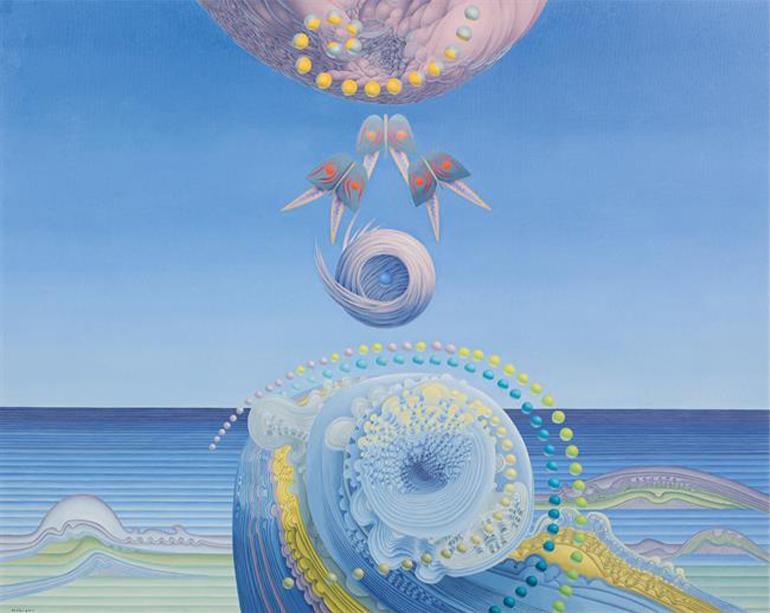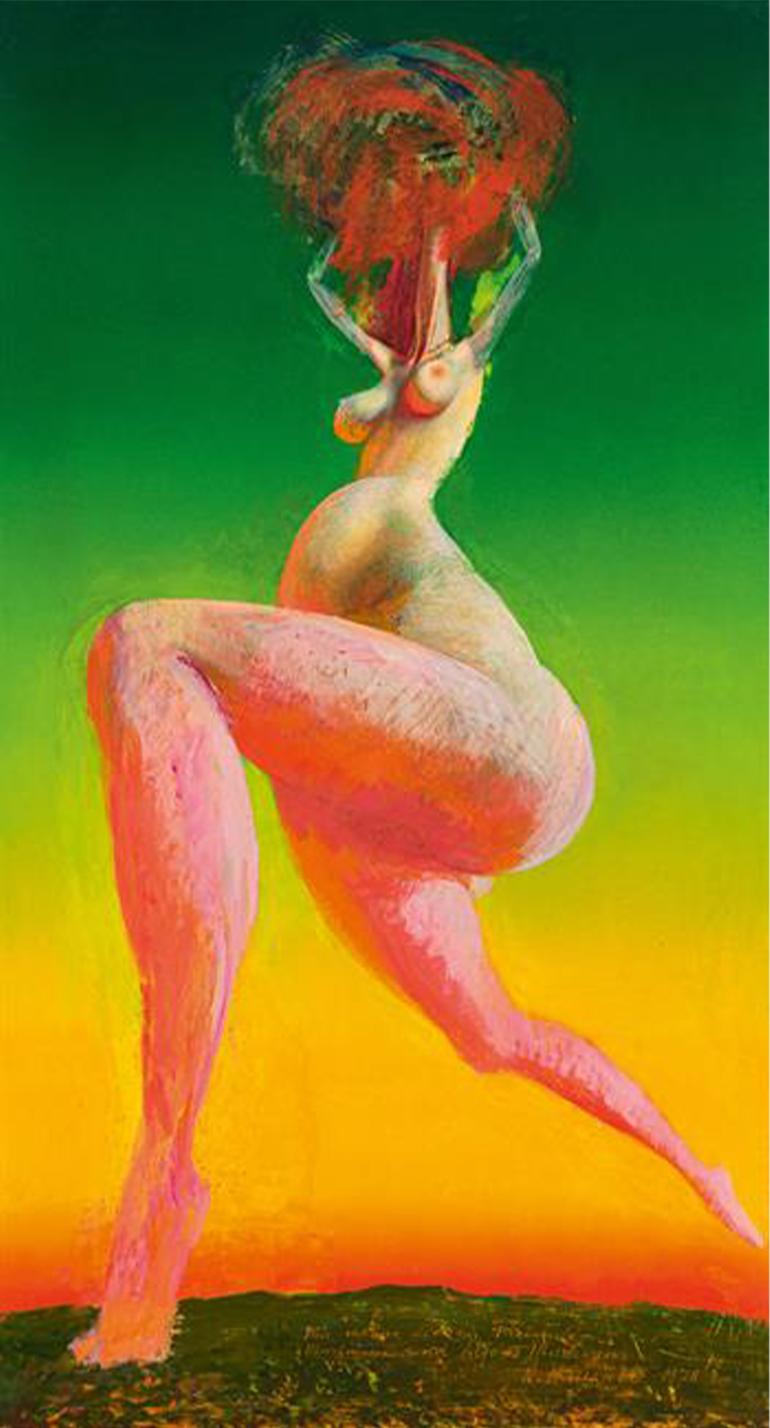
The imKinsky is very lucky to show in its Christmas Auction a special room dedicated to the Phantastic Realists. Could you explain this art movement?
AP: The Viennese School of Phantastic Realism emerged in the 1950ies. It picked up the thinking of the 1920ies: the surrealism and the psychoanalysis, much discussed in between the wars. The Phantastic Realism emanated after WWII from the Viennese Academy of Fine Arts, as a way to answer to the Nazi times. The most prominent representatives are Ernst Fuchs, Arik Brauer, Rudolf Hausner, Anton Lehmden, Helmut Leherb and Wolfgang Hutter, also Peter Proksch and Kurt Regschek.

How can this art movement be best described?
AP: They used fantastic-unreal motives, which were put to the canvas with technical perfection. The care and tradition of the painting technique of the Old Masters, especially the glaze in the style of Flemish and older German painting and finally the mannerisms were important. On top of that, there was the influence of the psychoanalysis, which had originated in Vienna.

How popular were the Phantastic Realists on the art market?
TP: Their first group exhibition took place in 1959 at the Vienna Belvedere Museum. As mentioned, this group differed wildly from the abstract Painting style popular at the time. This exhibition therefore helped the artists to quickly gain international recognition. Their bizarre, fantastic dreamworlds full of surprises were much applauded and made Phantastic Realism one of the most successful art movements in the Austrian Modernism.

What do you think when looking at the fantastic – and fantastically large – painting by Wolfgang Hutter?
AP: It is a truly museal painting! And it carries the poetic title “Sundown”. One could look at it for hours and still discover new details – this is masterly executed! Hutter creates a whole fantastic universe – a Hutter-World – in a three meter wide painting. I would call him a true magician of painting.
Does it touch your emotions?
AP: When looking at it, I am reminded of the “Garden of Delights” by Hieronymus Bosch, also works from Botticelli, Brueghel, many large landscapes in the history of art come to mind. All these still emanate an incredible aura and draw endless fascination. The great technical mastery, the old craft, the passion underneath it all – you can feel it all. This is real art to me, namely that talent and passion in a work of art will survive the test of time, and keep touching people.
TP: The artists used scenes from the Old Testament and the Apocalypse, their pictural worlds seems to originate in dreamworlds and Myths which they fill with cosmical and erotic depictions. All these are topics that are always timeless.
Could it be said that now is the perfect moment for this kind of escapism?
TP: Sure – even though their art was considered for many years as “kitsch”, they are continuously gaining recognition and visibility.
AP: I agree. The works in this auction are a particularly good investment. They have stamina and timeless elegance.
TP: The art of the Phantastic Realists offers us the possibility to escape our world for a moment: The viewer is led into a more ideal, fantastic world.
And a personal question: How important is fantasy to you?
AP: As a child, I used to drift into fantasy worlds… And I still love looking, really looking at pictures. What world is hidden behind a painting? Which thoughts? Which emotions? The Viennese Phantastic Realists gift us with many supplementary worlds on top of our own. Timeless worlds which we can visit whenever we want– how wonderful right now, when we all have to stay put…
TP: The real world can be cruel and devoid of fantasy. Fantasy allows us to escape. And I think that this is important at any time, but especially true today.
